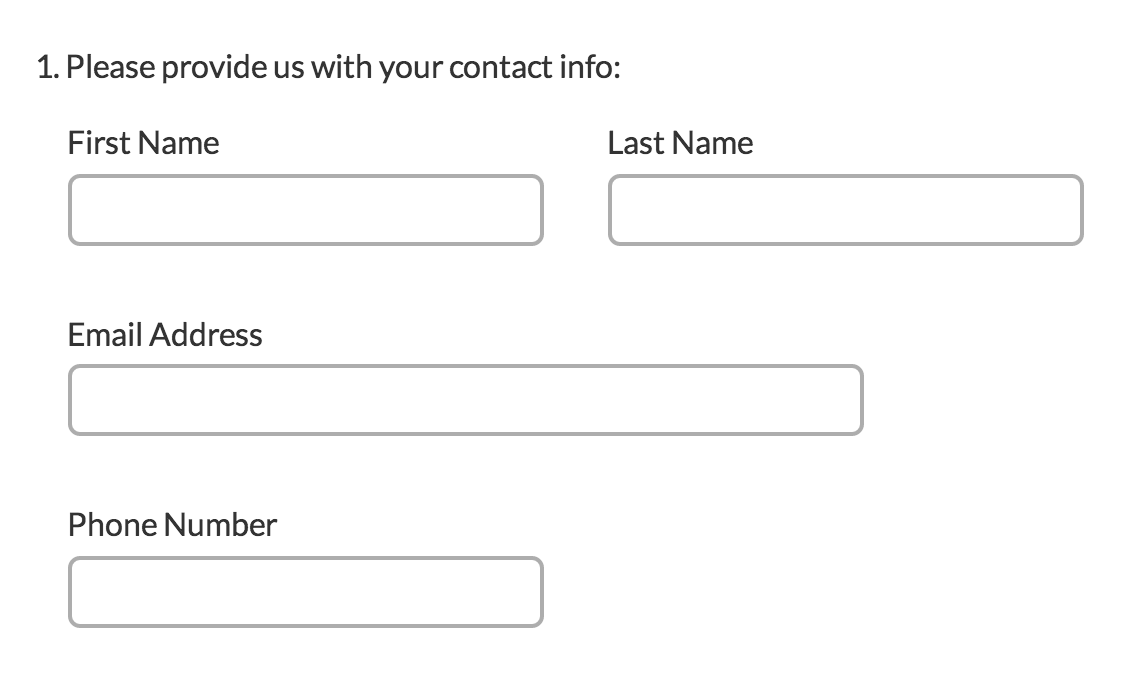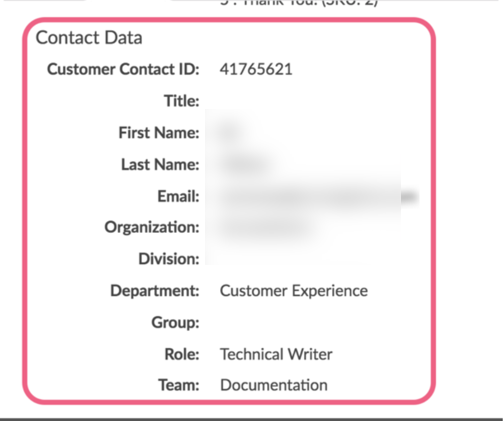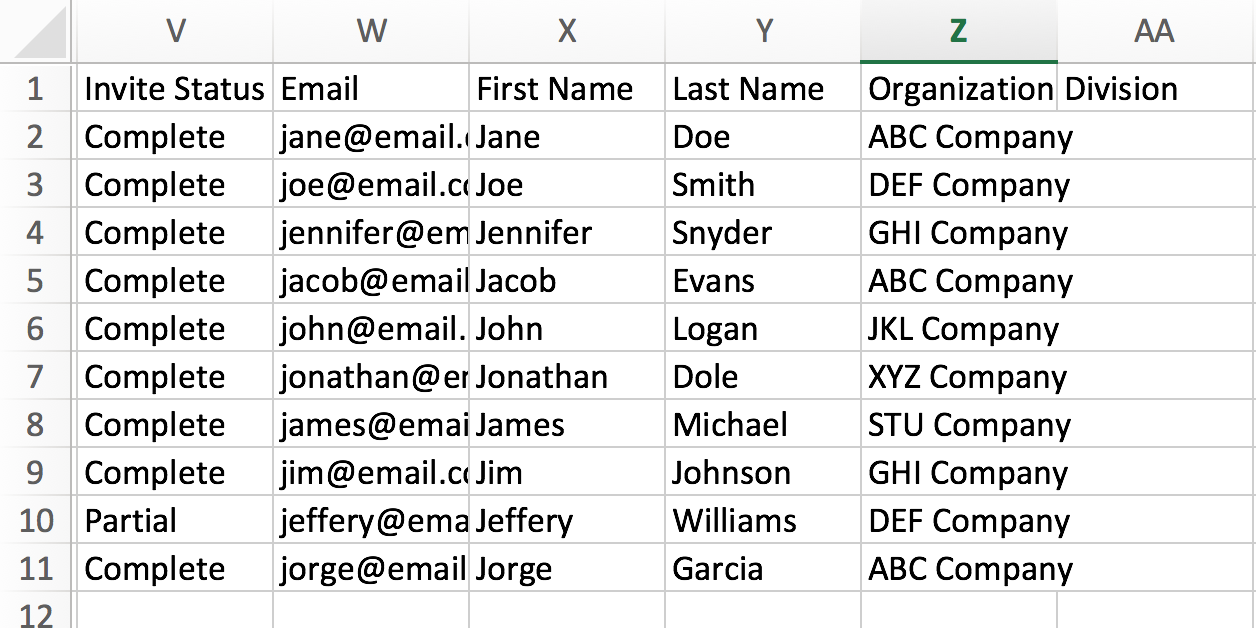Looking for a way to determine both who responded to your survey and which response belongs to whom? There are several ways to go about this. Before you decide on your approach you'll need to answer the following question:
Do you already have a list of people that will be responding to your survey?
Answering this question will assist you and deciding on your approach for identifying who took your survey.
No, I do not have a list of people who will be responding to my survey.
When you don't have a list of contacts who will be taking your survey there is only one option available to ensure that you can identify whose response is whose:
You will need to add fields to your survey to collect identifying information (e.g. email address, first name, last name etc). This is the easiest method for determining whose response is whose. This is also the only method available if you don't have a pre-existing list of people who will be taking your survey. Learn more about adding fields to your survey to collect identifying informationYes, I already have a list of people who will be responding to my survey.
Since you already have a list of people that will be responding to your survey you might prefer not to ask for identifying information in the survey. Fortunately there are a number of different options available to tie contacts to their responses if you have a list of contacts. Each of the below methods requires a list of contacts that you are going to survey.
- Upload your list of contacts to an Email Campaign
- Upload your list of contacts to a Login/Password Action
- Use the Alchemer Unique Identifier (SGUID) URL Variable or another URL Variable
- Use one of our third-party Integrations to pull contact information into your surveys
Option 1: Add questions to collecting identifying information in your survey
Adding fields to your survey to collect identifying information is as easy as adding the Contact Form question type to your survey. If identifying your respondents is pertinent to your survey be sure to set up these questions as required.
We recommend placing the Contact Form question type on the first page of your survey.

Ok, I've done this. Now, how do I identify whose response is whose?
Your questions that collect identifying information will be available like any other question in your survey within the Results sections of your survey (Individual Responses, Reports, and Exports).
Under Results > Individual Responses you will be able to review the identifying information along with your other survey questions response by response. Below you can see that we customized the individual response grid so that we can see identifying information along with other survey questions. Click each response to review the response in detail.

You might also choose to download a CSV/Excel Export of your survey data to review all responses and their identifying information in a spreadsheet format.
Option 2: Upload your list of contacts to an Email Campaign
Email Campaigns are our recommended method for tracking respondents and their responses. This is because it is so easy!
You'll need a list of email addresses for the contacts you wish to take the survey. These contacts can be uploaded to either our Email Lists system or directly into an Email Campaign. In addition to the contacts' email addresses, you can upload additional contact information, such as First/Last Name, Organization, Phone, etc.
The links provided to your contacts in their email invites are unique survey links that will map to the email address (and other contact data) you uploaded into your Email Campaign. This way you know whose response is whose!
Ok, I've done this. Now, how do I identify whose response is whose?
Once your responses start rolling in you'll likely want to identify whose response is whose. Under Results > Individual Responses you'll see your responses. If you click on a response on the Details tab scroll to the Contact Data section to identify which contact provided the response.

If you would like to report on this information in a spreadsheet format create a CSV/Excel Export under Results > Exports. Be sure to select the option to Include Email Invitation & Contact Fields.

The downloaded spreadsheet will include all of your contact data in addition to the survey response data.

To learn more about track your contacts throughout the email campaign visit our Monitor Your Contacts' Progress Tutorial!
Option 3: Upload your list of contacts to a Login/Password Action
The login/password action can also be used to identify your respondents' responses. To do so, you'll need to upload a list of contacts with a unique login and password for each as well as any other contact information you'd like to include.
Once you've collected data you'll be able to trace each response back to a given contact using the password that they used, or, if you uploaded and mapped additional contact information to questions or hidden values in your survey you'll have these fields available to identify each response!
Limitation of Using a Login/Password Action:
- will NOT provide a means of Save and Continue
- Only creates a one-to-one correspondence if using single-use passwords
Ok, I've done this. Now, how do I identify whose response is whose?
To learn more about Login/Password Actions visit our Login/Password Action Tutorial!
Option 4: Use the Alchemer Unique Identifier (SGUID) URL Variable or another URL Variable
sguid is a URL variable that can be appended to the end of a distribution link to make the response unique.
Alchemer uses sguid in Email Campaign links. You can employ sguid yourself by adding it to the end of your distribution links.
Here is an example survey link using sguid:
http://www.Example.com/s3/123456/example-survey?sguid=user1234
To learn more about using sguid, visit our SGUID Tutorial!
If you simply need to identify a respondent but don't need for them to have the ability to return to exactly the same response, any URL variable you choose will work. For example, customerid=5678.
Here is an example survey link using the URL VariableSalesforce Marketing Cloud (Formerly ExactTarget) Integration customerid:
http://www.Example.com/s3/123456/example-survey?customerid=5678
This customer id will be stored as part of the response which will help you identify it later!
Limitations of using a URL Variable other than sguid:
- will NOT provide a means of Save and Continue
- will NOT provide Duplicate Protection
If you'd like to use another URL Variable as sguid you can do so! Visit our SGUID tutorial to learn more!
Option 5: Use a third-party Integration to pull contact information into your surveys
If you are a user of our Salesforce or Salesforce Marketing Cloud (formerly ExactTarget) you can also pull information from those services to help identify your respondents. There are a few ways to do this:
- A variation of the URL variable method outlined above where the URL variable would be a record ID (Salesforce) or Subscriber Key/Email (ExactTarget)
- A variation of the SGUID method outlined above where the SGUID variable would also ensure one to one mapping
- A look up method, where you first ask your respondent to provide some information that you can cross reference with other data in ExactTarget or Salesforce.
To learn more, visit our Salesforce and Salesforce Marketing Cloud tutorials!
Help! I didn't use any of these methods for identifying my respondents! Can I still identify my respondents?
Did you start collecting responses only to realize that you forgot to add a question to your survey to help you identify whose response is whose? Unfortunately, while we collect as much metadata as possible, this usually isn't enough to pair responses with respondents.